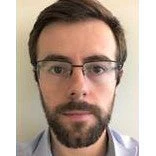
On February 20, 2015, World Bank missions to Yemen were suspended due to increased security concerns. One particularly eye-opening graphic gives a rough glance at what Yemen would look like if it consisted of only 100 people: 74 would need humanitarian assistance, 57 would lack access to clean water, 60 would be food insecure and at risk of famine, 10 of the women and children would be acutely malnourished, 27 would be at risk of contracting acute watery diarrhea/cholera, and 53 would have no access to health services. This tragedy severely limits our ability to monitor operations in the country—or so it would seem. Senior Financial Management Specialist of the Governance Global Practice, Moad Alrubaidi, and WBG Analyst in the Sustainable Development Practice Group, Charles Fox, have answers.
Moad’s project took a closer look at SMART Fiduciary tools to monitor World Bank projects. SMART Fiduciary leverages technological advances to strengthen financial management activities, mitigate risk, optimize quality assurances, streamline bureaucratic processes, and build capacity for sustainable country systems. The potential technologies include: Digital ID and mobile payments; remote sensing: internet of things; remote sensing using satellite and drones; blockchain; social media big data and intelligence, and geo-tagging. By “following the money,” we can see exactly where and how World Bank dollars are being spent, upholding the promise to our shareholders in our Articles of Agreement that aid for the poor reaches its intended beneficiaries.
Charles’ GOSTnets methodology has a similar objective but looks at geospatial data for a bird’s eye view of what’s happening in a country. Nowhere could there be a better test case for innovative methods to ending poverty than the case of Yemen. Because Bank staff haven’t been able to travel to Yemen since February 2015, estimating access to healthcare by traditional methods like household surveys was out of the question. Instead, GOStnets “fuses” information about population, healthcare facilities, and roads with a combination of open data (including traditional survey data, microdata, time series indicators, and satellite imagery), remote sensing, and good old-fashioned elbow grease. First the GOSTnets team looked at where the people are, drawing pre-war population estimates with partners from Southampton University’s WorldPop project.
Then they turned to World Bank partners collecting hospital and clinic location data from aid workers on the ground working with the World Health Organization and UNICEF.
Finally, a member of the GOSTnets team edited digital satellite imagery from OpenStreetMap to get a sense of where the roads are.
Then we took the final secret ingredient—GOSTnets—to calculate travel times to healthcare facilities. GOSTnets goes further than tools like Google Maps because it opens the proverbial “black box” of travel conditions: things like bridges that don’t exist yet, flooded roads, and border crossing times. Incorporating GOSTnets into the project allowed us to more accurately estimate what access to healthcare is really like in Yemen.
In fragile and conflict-ridden environments, real-time monitoring and improvements can be difficult—but SMART fiduciary has found a way to not only retrieve data immediately, but also allow beneficiaries to engage with the project, in partnership with UN Agencies. An online dashboard tracks cash transfer payments, adding transparency to the process and linking the grievance mechanism to an independent call center capable of addressing local needs. Additionally, beneficiaries can send feedback to operations staff instantly through mobile technology and social media. Geodata, photos, and information are sent to a cloud server which closes the loop with management to inform decisions while the project is underway. Internet of Things (IoT) sensors embedded in equipment track fuel consumption and movement of procured goods and services, assuring critical end-to-end service delivery is functional and used for intended purposes.
While GOSTnets is still in the early stages of development, it can still exert monumental impact on operations. Incorporating this analysis into UNICEF and the World Health Organization’s outreach campaign in Yemen can assist these operations on the ground, eventually increasing how many facilities they can support and/or their prioritization. The end result will be helping Yemenis access the healthcare they so desperately need. As Charles says, “Nothing motivates like the threat that your work might directly impact another human’s life.”
Interested in incorporating SMART Fiduciary tools or GOSTnets into your projects? We have some tips for you. Moad recommends three key steps to take: identify a package of oversight mechanisms that is appropriate to the risks on the ground in client country; build these mitigation measures into the design of projects; and work with partners and the authorities to scale-up from the use of these techniques in World Bank projects to the totality of the authorities’ budget.
For GOSTnets, you may be surprised to learn that about 80% of time spent on the Yemeni case was spent on data cleaning, improvement, cross-checking and processing, while only 20% of the project’s duration was devoted to the actual analysis. With Python code and modern computing to help properly harmonize the data, crunching numbers and generating outputs can answer the big questions quickly. Charles recommends planning time accordingly, especially when working with other agencies—it’s common for deadlines to slip, but this should be an opportunity for the World Bank to take the lead and make sure we follow through on our commitments to our clients.
There’s more work to be done in both areas with GOST projects expanding their measurement of access and mobility to walking (not just vehicles), reducing accessibility in conflict areas, and answering how we can best meet these goals with limited resources. We also plan to find further cooperation points with WHO and UNICEF. As GOSTnets and SMART Fiduciary tools work to provide better data for operations and enable supervision in conflict zones, the World Bank will continue to collaborate with partners to pioneer effective, efficient development solutions to the world’s poorest. How will you transform your projects with these new tools? Tell us in the comments below!









Join the Conversation